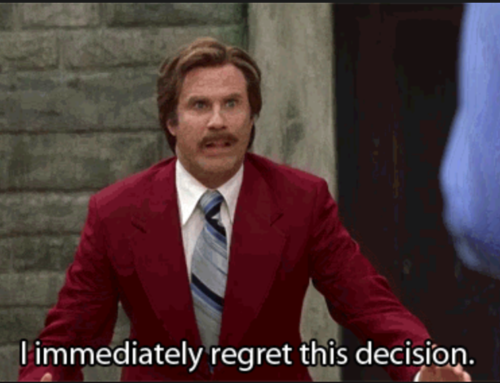The main difficulty in proofreading your own text is simple: you have trouble recognizing your own typos, grammar mistakes, and inaccuracies. You know what you want to say; it’s just not always communicated in your writing.
When you act as your own proofreader, you may often overlook mistakes because your eye doesn’t recognize them as mistakes. You may even finish reading a sentence without actually reading the words on the page—the sentence already sounds correct in your mind since you know the meaning it is supposed to convey.
Here are three proofreading practices that will help train your eye to catch more of your own errors.
1. Find Your Proofreader Alter Ego. The Batman to your Bruce Wayne, the Superman to your Clark Kent. You need to look at your text as though you were not the person who wrote it, but someone with a superior eye for detail who does not know what you intended to write.
After you are done with your first draft, take a break from writing and reading. Spend time doing different activities before you edit your text. It’s important to plan a break and go back to your text at a later time, rather than writing and editing in one sitting.
2. Compare and Contrast. Inconsistencies occur in fiction and nonfiction. They make your text look sloppy and are often a matter of style, rather than grammar. What superpowers should your alter ego possess to combat inconsistencies, you may ask? To start: memory.
Make mental notes of specific terms as you review your text. For example, the term “copy editing” is also often spelled “copyediting,” or “copy-editing;” “proofreader” may be written “proof reader.” Is there a character named “Ann” in your novel? Make sure the proper name is not sometimes spelled “Ann,” and other times “Anne.” Are you writing about Walmart? Do you refer to the company as “Walmart,” “WalMart,” and “Wal-Mart?” Pick one style and make sure that you use it consistently.
A similar genre of errors includes typos that are properly spelled words (and therefore not caught when you use spell-check), but are not actually the words that you intend to use. You could type “over” instead of “oven,” “of” instead of “off,” “peer” instead of “pier,” etc. The possibilities are endless. A thorough proofreading will eliminate these flaws.
3. Say What? Read your text out loud, paying attention to each word. It’s equally important to pay attention to punctuation. Your proofreader alter ego also comes in handy here. Enunciate the words and pause for punctuation as someone who has never read the text before. Is it clear?
This technique may identify sentence fragments, run-on sentences, and other abridged or convoluted thoughts. When a sentence is weak, and does not express the proper message, it is usually either incomplete or contains too many ideas for one single sentence.
To dissect your writing, pay attention to the sounds of words joined together to make up a sentence. Do the words flow naturally, or have you read for five minutes without taking a breath? Once you break it down, you’ll spot the areas that need improvement.
If you still need professional proofreading services, I’ve got my proofreader alter ego down. I’m Revision Fairy.
Get an Editorial Review | Get Amazon Sales & Reviews | Get Edited | Get Beta Readers | Enter the SPR Book Awards | Other Marketing Services






















I definitely agree with #1. You need to take at least a month off between writing and revising, if not more. You have to get to the point where you forgot what you wrote.
“The point where you forgot what you wrote” is an excellent way of putting it! Thanks for expanding on the thought!
Useful stuff, Stephanie, thanks for that. Although it’s not too hard to proofread blog posts or short copy, books are another matter. I try to get clients to hire a real proofreader, but it’s an uphill battle sometimes. I just did a novel and the author, editor, and a friend of the his all “proofread” the book. After it was published, people started sending in corrections, and the author finally hired a proofreader. The result? 2 pages of corrections that had been missed by everyone. So yes, it’s hard to proofread your own copy and, when it comes to books, even harder. Remember that proofreaders also check consistency of formatting and many other items as well.
Great points, Joel! As writers, we’re so closely tied to our projects. When you’re passionately involved in your writing, let’s say a book, you’re not necessarily in the right mind set to verify if everything on page 230 is consistent to what is on page 3, 10, 100, etc. A proofreader may clean up your text more easily because she wasn’t involved in the creation process–she’s more removed from the “big ideas” and can focus on fine-tuning details.
Great article. Love the ‘alter ego’ idea!
Thanks!
Thanks for the feedback, RJ! Glad you enjoyed it!
I find myself following the story, sort of reliving it, as it were.
To combat that, I edit from the end forward. Biggest errors I find are repeating a word – “the” ending a line and beginning the next line is common. MSWord Syntax Checking catches that but it’s a pain in the butt because it makes me wade through what it thinks is bad syntax.
If you’re already familiar with the content, going through your text from the end is definitely a helpful way of spotting errors that you may miss when you read through the text normally.